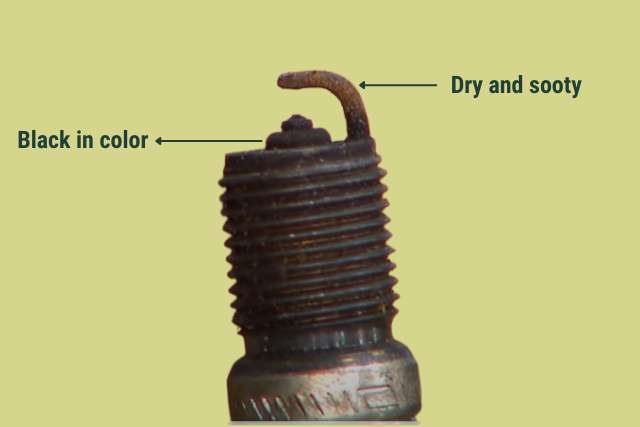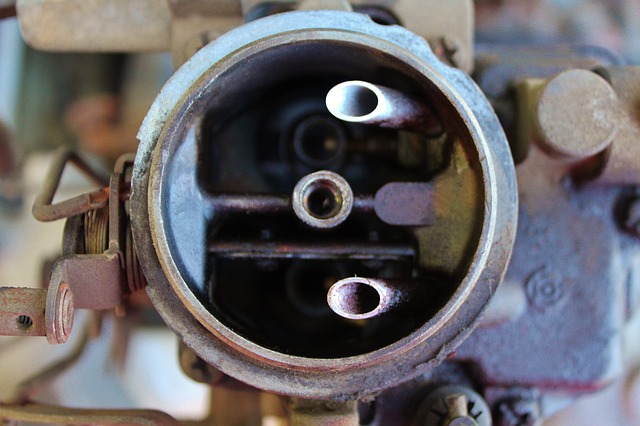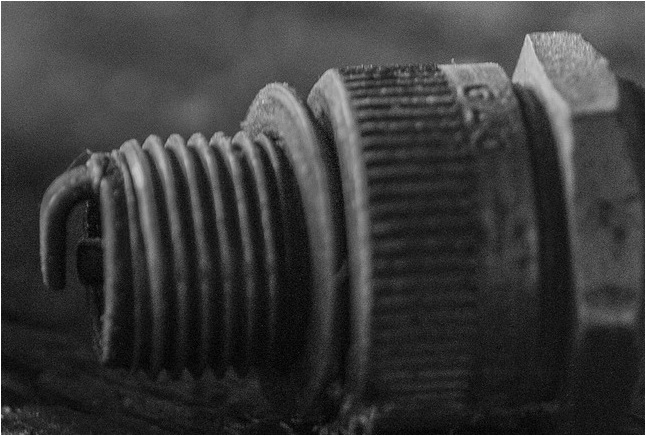Carbon buildup on spark plug tips can make them ineffective over time. Once the spark plug goes bad, there will be all sorts of engine misfires and poor performance.
Then, why do spark plugs get carbon buildup? The primary cause for black carbon buildup on spark plugs is the engine burning a rich air-fuel mixture. Another common reason is the spark plug is too cold and is operating at a lower temperature than required.
Let’s discuss these causes in more detail. And before going there, let’s also know how the carbon buildup on a spark plug looks like.
How carbon buildup on a spark plug looks
If the end of the spark plug is black, dry, and covered in soot – then the spark plug has carbon build-up. And this buildup is often dubbed as carbon fouling.
The carbon buildup on the spark plug will be dry and dusty with black in color. If you touch the buildup and wipe it on your fingers, you will feel it powdery. Just like the soot coming from a fireplace.

One key thing here to note is that the black soot is dry. If the deposit is wet and slippery (but again in black texture), then that is oil fouling, not the carbon fouling we are discussing here.
To make the distinction clear:
- Carbon buildup: end of the spark plug is black, dry, and covered in soot.
- Oil fouling: deposit on the spark plug is black but wet and slippery.
Another major thing you will notice is that the carbon buildup is concentrated on the spark plug tip and the electrodes. As you move away from the electrodes along the thread, the black color fades down – indicating decreasing carbon buildup.
What causes black carbon on spark plugs?
The primary cause for black carbon buildup on spark plugs is the engine burning a rich air-fuel mixture.
A rich air-fuel mixture refers to high amounts of fuel than required for the amount of air present. When a rich air-fuel mixture enters the engine, the fuel will not burn completely. The excess fuel will either detonate after the combustion cycle or in the exhaust system.
This rich fuel mixture with incomplete burning leads to the buildup of carbon along the spark plug tip.
As for why the engine is running on a rich fuel mixture, these are the culprits:
- Carburetor tuning is off
- Air filter is clogged
Carburetor tuning is vital for the engine to receive the air-fuel mixture in the right proportions. If the tuning is off, the carburetor mixes the air and the fuel in the wrong amounts. Either it will be lean (too much air and too low fuel) or will be rich (too low air and too much fuel).

As for air filters, a clogged and blackened air filter is always a nuisance.
When the air filter is clogged, the first thing that happens is – that not enough air gets into the engine. The clogged filter is just not allowing sufficient air entry. As a result, the engine receives too less a quantity of air leading to a rich fuel mixture.

Another reason for carbon buildup can be attributed to spark plugs having a low heat range or a cold spark plug.
When the air-fuel mixture is running rich, you need a hot spark plug with a high operating temperature at the spark plug tip to prevent carbon buildup.
But, if the spark plug is a cold plug and the operating temperature is not that high, the rich fuel mixture in the engine will definitely lead to high carbon buildup.
Apart from these two, other minor reasons causing carbon buildup on spark plug include – too wide a spark plug gap and low compression in the engine.
However, these are minor reasons. The primary cause for carbon buildup still remains the engine running on a rich fuel mixture.
Carbon buildup in winter or cold temperatures
When the engine is running rich, the carbon buildup on spark plugs is even higher in winter or in cold temperatures.
Add to that, if the spark plug is a cold spark plug with its operating temperature not high enough, then the deposits will be even higher.

As for why is this, it again goes back to the same explanation. Engine combustion gets difficult during winter and in cold temperatures if the spark plug is cold. Fuel will not burn completely.
And if the engine is running rich, the amount of fuel not burning will be even higher. This unburned fuel will start carbon depositing on the spark plug, giving rise to black and sooty deposits.
How do you get rid of carbon buildup on spark plugs?
Now, we know the main culprit is the rich fuel mixture. This is responsible for carbon buildup on the spark plugs. Of course, a cold spark plug with a low operating temperature adds to the misery as well.
But, how do you get rid of it? There are two parts here. One, how to get rid of already built-up carbon deposits on the spark plugs. Two, how to ensure this buildup won’t repeat. Let’s call this the immediate solution and the preventive measures.
Immediate Solution
The immediate and short-term solution is to remove the spark plug and examine the level of carbon buildup and act accordingly.
If the buildup is not too much at the tip, you can clean the electrodes and fit the spark plug back. But, a better solution is to replace the spark plug altogether.
And of course, if the carbon buildup is too much already, you must replace the spark plug with a new one. No point using that dirty black spark plug there.
However, the problem does not end here. We are not addressing the root cause of carbon buildup. Even if you replace the spark plug with the new one, again, the new spark plug will have carbon buildup in no time. Unless we address the core problem which is discussed below.
Preventive Measures
The main issue is the engine receiving a rich fuel mixture. The other reason is a cold spark plug. We need to address that. Here are the measures you can take:
- Tune the carburetor: Carburetor tuning is vital. And since it is off, the engine is receiving a fuel-rich mixture. Tune the carburetor right to adjust the air-fuel mixture that the carb mixes in and sends to the engine. With the right air-fuel mixture, the carbon buildup problem is solved.
- Clean the air filter: A dirty or clogged air filter blocks the air entry to the carburetor. With less air entry, the engine will start running on a fuel-rich mixture, thus leading to carbon buildup. So check the air filter and clean it. If it’s too clogged, better to replace it entirely.
- Use hot spark plugs: More precisely, use spark plugs with a suitable operating temperature. Too hot a spark plug is again bad. But too cold spark plugs are one of the reasons for carbon buildup. You can think of replacing the spark plug if the above two measures didn’t work effectively.
To Summarize
If the end of the spark plug is black, dry, and covered in soot – then the spark plug has carbon build-up. On the other hand, if the deposit is wet and slippery (but again in black texture), then that is oil fouling.
The primary cause for black carbon buildup on spark plugs is the engine burning a rich air-fuel mixture. A clogged air filter and incorrect carburetor tuning are the main reasons for the rich air-fuel mixture in the engine.
Another reason for carbon buildup can be attributed to spark plugs having a low heat range or a cold spark plug.
Apart from these two, other minor reasons causing carbon buildup on spark plug include – too wide a spark plug gap and low compression in the engine.
The immediate solution to address the carbon buildup on spark plugs is to remove the spark plug and clean it. Or replace the spark plug with a new one entirely.
The long-term solution includes: i) checking the air filter for clogging, and then cleaning or replacing it; ii) tuning the carburetor right; iii) if the above two didn’t work, change the spark plug with a higher operating temperature.
